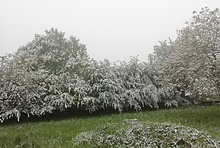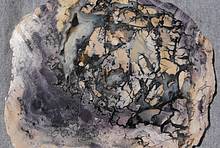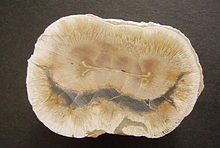Home PageAbout MindatThe Mindat ManualHistory of MindatCopyright StatusWho We AreContact UsAdvertise on Mindat
Donate to MindatCorporate SponsorshipSponsor a PageSponsored PagesMindat AdvertisersAdvertise on Mindat
Learning CenterWhat is a mineral?The most common minerals on earthInformation for EducatorsMindat ArticlesThe ElementsThe Rock H. Currier Digital LibraryGeologic Time
Minerals by PropertiesMinerals by ChemistryAdvanced Locality SearchRandom MineralRandom LocalitySearch by minIDLocalities Near MeSearch ArticlesSearch GlossaryMore Search Options
The Mindat ManualAdd a New PhotoRate PhotosLocality Edit ReportCoordinate Completion ReportAdd Glossary Item
Mining CompaniesStatisticsUsersMineral MuseumsClubs & OrganizationsMineral Shows & EventsThe Mindat DirectoryDevice SettingsThe Mineral Quiz
Photo SearchPhoto GalleriesSearch by ColorNew Photos TodayNew Photos YesterdayMembers' Photo GalleriesPast Photo of the Day GalleryPhotography
╳Discussions
💬 Home🔎 Search📅 LatestGroups
EducationOpen discussion area.Fakes & FraudsOpen discussion area.Field CollectingOpen discussion area.FossilsOpen discussion area.Gems and GemologyOpen discussion area.GeneralOpen discussion area.How to ContributeOpen discussion area.Identity HelpOpen discussion area.Improving Mindat.orgOpen discussion area.LocalitiesOpen discussion area.Lost and Stolen SpecimensOpen discussion area.MarketplaceOpen discussion area.MeteoritesOpen discussion area.Mindat ProductsOpen discussion area.Mineral ExchangesOpen discussion area.Mineral PhotographyOpen discussion area.Mineral ShowsOpen discussion area.Mineralogical ClassificationOpen discussion area.Mineralogy CourseOpen discussion area.MineralsOpen discussion area.Minerals and MuseumsOpen discussion area.PhotosOpen discussion area.Techniques for CollectorsOpen discussion area.The Rock H. Currier Digital LibraryOpen discussion area.UV MineralsOpen discussion area.Recent Images in Discussions
GeneralIs this true???

17th Sep 2012 22:03 UTCRick Dalrymple Expert
http://news.yahoo.com/russia-reveals-shiny-state-secret-awash-diamonds-131212873.html
17th Sep 2012 22:14 UTCFred E. Davis
17th Sep 2012 22:25 UTCRon Layton

17th Sep 2012 22:32 UTCRick Dalrymple Expert
17th Sep 2012 23:36 UTCClosed Account 🌟
Having said that, the question raised in this thread – “Is it true?” – is answered.
Some questions that could be asked in this matter are:
By what scale?
In which direction?
Which modification of carbon?
If you look at the different modifications of carbon, you will find that graphite for example is actually harder in one direction than diamond in a certain direction. This comes from the anisotropy of the hardness in both.
Now if somebody finds a modification of carbon that is “twice as hard” as diamond, then it is no longer a diamond as the hardness of diamond is related to its crystal structure and the forces that hold this structure together. This is basically the same in all diamonds worldwide (if you disregard the effects of trace elements).
Branko

18th Sep 2012 00:19 UTCKeith Wood
So yes, this is possible. I would like to see even better support for this information, however.

18th Sep 2012 00:27 UTCKeith Wood
18th Sep 2012 00:55 UTCDavid Von Bargen Manager
http://www.sciencedirect.com/science/article/pii/S1631071303001317
http://www.sciencedirect.com/science/article/pii/S0012821X09007389
I don't think that DeBeers has anything to worry about. (you need a SEM to see these things).
18th Sep 2012 01:09 UTCOwen Lewis
Diamond (Mohs 10) is shown to be 5 to 6 times as hard as Corundum. (Mohs 9). Diamond IIa has been shown to have an absolute hardness that varies acording to the direction of the test from 137 to 167 GPa. By the same test method (nanoscale scratch testing using a Fullerite stylus of prescribed dimensions). Corundum shows a hardness of 23 GPa. In other words the variance in hardness demonstrated in a single Diamond crystal is greater than the difference in hardness between Corundum and Talc. This work was done in the USSR at the end of the '80's and published in Western scientific literature in the early 90's. I.e. this information is scarcely news any more.

18th Sep 2012 01:39 UTCAnonymous User
Diamonds are very complex, and hardness (as well as other properties) can and does vary according to many variables. While the reporters may be as clueless as usual, there may be some truth to "extra hardness."

18th Sep 2012 03:34 UTCRick Dalrymple Expert
I didn't understand the size of the diamonds at this location either. If you need an SEM to see these diamonds how to they test the hardness?

18th Sep 2012 04:16 UTCDavid Garske
Dave
18th Sep 2012 05:07 UTCDean Allum Expert
Perhaps there is another principle involved with these diamonds. If they were formed AND shattered by a significant blast, then maybe all the 'brittle' portions are obliterated, with just HARD splinters remain (survival of the hardest).
-Dean Allum

18th Sep 2012 05:44 UTCJenna Mast
20th Sep 2012 18:52 UTCRay Hill Expert
21st Sep 2012 01:52 UTCOwen Lewis
-------------------------------------------------------
> My first Ph.D. thesis at the University of
> Michigan was studying directional hardness in
> diamonds. The hardest and softest directions are
> both on the cube face at 45 degrees to each other,
> one tilting the stone a little bit away from
> parallel. Critical to a diamond cutter, the hard
> direction will cut through a grinding wheel, soft
> direction is very cuttable. (When you put the
> stone on the wheel, you can hear the hardness
> difference.) Also if you are mounting diamonds in
> a cutting tool, such as a diamond bit, the bit
> will cut faster and last longer if the stones are
> properly oriented. Work was done in the early
> 1960's.
> Dave
Observation of the phenomenon and coming to grips with its effects are much older - as I'm sure you know, Dave.
The first Diamonds to be worn as jewels were natural crystal forms (from about 300BC, in India). Octahedrons 'improved' by cleavage began to appear from 1300(Venice). *Most* transparent Diamonds will cleave relatively easily. To produce a jewel with a flat table from an octahedral crystal requires that one of the pyramidal points be sawn off parallel to the square central girdle. Diamond will not cleave in that plane but can be sawn relatively easily (compared to cutting in other directions). This technique became known c.1450. Because of the limits on the sawing techniques and lack of a full understanding of stone's refractive and reflective properties, further cuts were added to the jewel design only slowly over the next 300 years, Diamond jewels remaining relatively dark stones with few cuts additional to the octahedral cleaving and central table (with the single exception of the Rose cut). During this time, these jewels show relatively little brilliance, compared to modern cuts, but show good fire. The 19th Century brought improved saws that permitted gem quality stones to be cut more or less as required and as a mathematical understanding of the handling of light in Diamond suggested that the best effects could be obtained. The precursors for the modern Brilliant cuts, the Old Mine and Old European cuts, appearing in the 1800's, were a marked step forward. With many still in circulation today, these can easily be identified by the smallness of their tables relative to the diameter of the stones - a historic legacy. They also still do not show the full brilliance that was only to be made possible later, with the advent of better perfected designs and cutting techniques in the 20th Century.
The question of Diamond harder than Diamonds AIUI relates mainly to some translucent/opaque some Diamonds of industrial grade.in which, sho'nuff, resistance to sawing can be extreme because the parting planes on which the cutter (used to have to) rely do not appear to exist.

21st Sep 2012 04:25 UTCD Mike Reinke
"When a meteor plows into a diamond field' Yeah, that happens regularly.
Science aside, who are 'they'? And who revealed that nugget of truth to the reporter?
Let alone keeping a vast diamond field secret for 40 years. Mums da woid. These are communist politicians. ( not that others are better..)
Like David said, DeBeers isn't worried.
Fred totally nailed it with the spinal tap reference, thank-you, Fred!

22nd Sep 2012 20:58 UTCJohn Betts
True "Ballas" diamonds are polycrystalline, with radiating internal structure that presents only octahedral faces on the surfaces. Ballas diamonds are set in the bits of rock drills for this reason. When the diamond cleaves during drilling it presents another octahedral face.
Monocrystalline spherical diamonds are not true Ballas and are recognized by microscopic parallel cubic faces.
An early reference is:
http://www.minsocam.org/msa/collectors_corner/arc/diamond_hardness.htm
If I locate the recent study I will add the reference later.

22nd Sep 2012 21:20 UTCJohn Betts
22nd Sep 2012 22:13 UTCOwen Lewis
Your comment of 'difficulties in testing due to absolute hardness of Diamond' is well taken. This was a real problem until the discovery of Fullerite (C60). After that it was only a matter of time before accurate measurements of the varying hardness of Diamond became practical. These were, I believe. first carried out in a state science institute in the USSR in late '80's.
The secret to accurate testing is that the piece under test shall have a planar surface and:
- The stylus for the scratch test be fashioned in Fullerite or some other substance substantially harder than the specimen under test (Diamond in this case).
- The stylus have a prescribed and documented profile.
- The stylus be applied to the test piece normal to its surface plane.
- The force applied to stylus be accurately metered (these days in SI, i.e Pascals or, in this case, GigaPascals.
- A settled definition of what that measurement of force represents. It is the force that when applied to the stylus is just sufficient for the tip of the stylus to cause a permanent deformation of the surface of the test material. This is the measure of scratch resistance (= hardness).
Different types of Diamond demonstrate different hardnesses when measured accurately.The Soviet work (since emulated elsewhere) recorded that ,for Diamond type IIa a hardness of 137 GPa was measured on the 100 plane and 167 GPa was measured on the 111 plane. By way of comparison, C60 has a hardness of around 310 GPa. If you are interested, I can let you see a .XPS of a short paper on this work translated and published in English by Elsevier on 1998 (Ultrahard and superhard phases of Fullerite C 60 : comparison with diamond on hardness and wear). Or, with others, you can purchase through Elsevier or visit your local Uni library.
Relevant to this thread is speculation as to whether 'Balas Diamond' 'Carbonado Diamond' etc. exhibit features of crystalline structure which approach the structure of C60. Anyone have hard data on this?

23rd Sep 2012 01:30 UTCBart Cannon
I have learned a great deal from this thread. I was not very tempted to open the thread, but did so on a lark. I was rewarded for my lark.
Back during the "diamond rush" started by nearly penniless SEM operator Chuck Fipke, I did quite a bit of diamond indicator mineral work until one of the major exploration mining companies installed four electron probes in Kelowna, B.C. Fipke's only problem these days is figuring out how to deplete his bank account before he dies.
There is a modern book describing the Fipke revelations and diamond exploration in the far North of Canada.
"Barren Lands" by Kevin Krajick.
Probably illustrating the best example of a commercial application of the use of the electron microprobe and mineral exploration.
Bart
23rd Sep 2012 03:28 UTCLinda Smith

23rd Sep 2012 04:40 UTCRick Dalrymple Expert

27th Nov 2013 23:55 UTCJohn Betts
The 500x value came from a study comparing grinding resistance.
One article listed 100x difference in hardness: http://www.minsocam.org/ammin/AM38/AM38_108.pdf
But the latest citation focusing not on grinding but on scratching using superhard fullerite yields a 20% difference in hardness. See: http://nanoscan.info/wp-content/publications/article_02.pdf

28th Nov 2013 19:42 UTCPeter Piper

30th Nov 2013 22:43 UTCJohn Betts
Determining diamond hardness has always been problematic. Standard indentation tests like the Knoop, Rockwell, Vickers, Shore and Brinell failed because no indenter material had sufficient hardness to make an impression on a diamond crystal. The cubic face of a diamond is harder than all other known materials. But the octahedral face of diamond was known to be even harder. Because indentation tests were insufficient in determining the relative hardness of the diamond faces, researchers relied on comparing grinding resistance to determine relative hardness.
Grinding/polishing a diamond using diamond abrasives indicated large differences in hardness between the cubic and octahedral faces with variations depending on grinding direction/orientation (what diamond cutters call cutting against the grain or with the grain).
Denning reported measurable grinding hardness differences in excess of 500 times harder than the softest orientation of the cubic face using grinding the methodology. His upper limits of hardness were interpolated because the hardest face-orientations failed to show satisfactory results during grinding (see figures 3 and 4 in American Mineralogist, 1953, vol. 38, page 108-117).
However, the discovery of ultrahard fullerite (C60) provided a material that was harder than the hardest face of a diamond. Fullerite has a hardness of 310 gigapascals (GPa) on the Vickers Scale. Indentation tests using a fullerite indenter finally were able to yield hardness results for diamond cubic face of 137 ± 6 GPa and on the octahedral face of 167 ± 5 GPa, a difference of approximately 20% (Journal of Materials Research, 1997, vol. 12, pages 3109-3114)
This small difference in relative hardness makes a large difference when polishing diamonds. Diamond abrasives easily polishes cubic faces in the correct grinding direction, but slowly polishes octahedral even in the best grinding direction and no polish is possible in certain grinding direction. Until ultrahard fullerite abrasive becomes available, the 20% hardness difference between the faces will still result in large differences in polishing time.
1st Dec 2013 14:03 UTCRock Currier Expert

1st Dec 2013 14:45 UTCSpencer Ivan Mather
Spencer
1st Dec 2013 19:57 UTCElise Skalwold
-------------------------------------------------------
> Determining diamond hardness has always been
> problematic.
That is for sure. When I was researching the nano-polycrystalline diamond (NPD) in order to write something that would hopefully interest the gemology community, I had to sift through some very "dense" papers about hardness properties of diamond - and then try to condense them into something readable to provide background on the specimens I was studying. It was an education into how complicated the topic of this thread gets. Two of interest here might be:
"Carbon polymorphism in shocked meteorites: Evidence for new natural
ultrahard phases" Tristan Ferroir, Leonid Dubrovinsky, Ahmed El Goresy, Alexandre Simionovici,
Tomoki Nakamura, Philippe Gillet Earth and Planetary Science Letters 290 (2010) 150–154
"Natural and synthetic polycrystalline diamond, with emphasis on ballas" Lux B., Haubner R., Holzer H., DeVries R.C. International
Journal of Refractory Metals and Hard Materials, (1997) Vol. 15, No. 5–6, pp. 263–288
For background on NPD, see the the reference list at the end of this overview paper: Skalwold, E.A. (2012) Nano-polycrystalline diamond sphere: a gemologist's perspective. Gems & Gemology, Vol. 48, No. 2, pp. 128-131. http://www.gia.edu/doi/10_5741-GEMS_48_2_128
and follow-up paper, Skalwold, E.A., Renfro N., Shigley J.E., and Breeding, C.M. (2012) Characterization of a synthetic nano-polycrystalline diamond gemstone. Gems & Gemology, Vol. 48, No. 3, pp. 188-192 http://www.gia.edu/doi/10_5741-GEMS_48_3_188
Best wishes,
Elise




Mindat.org is an outreach project of the Hudson Institute of Mineralogy, a 501(c)(3) not-for-profit organization.
Copyright © mindat.org and the Hudson Institute of Mineralogy 1993-2024, except where stated. Most political location boundaries are © OpenStreetMap contributors. Mindat.org relies on the contributions of thousands of members and supporters. Founded in 2000 by Jolyon Ralph.
Privacy Policy - Terms & Conditions - Contact Us / DMCA issues - Report a bug/vulnerability Current server date and time: April 23, 2024 20:23:15
Copyright © mindat.org and the Hudson Institute of Mineralogy 1993-2024, except where stated. Most political location boundaries are © OpenStreetMap contributors. Mindat.org relies on the contributions of thousands of members and supporters. Founded in 2000 by Jolyon Ralph.
Privacy Policy - Terms & Conditions - Contact Us / DMCA issues - Report a bug/vulnerability Current server date and time: April 23, 2024 20:23:15











